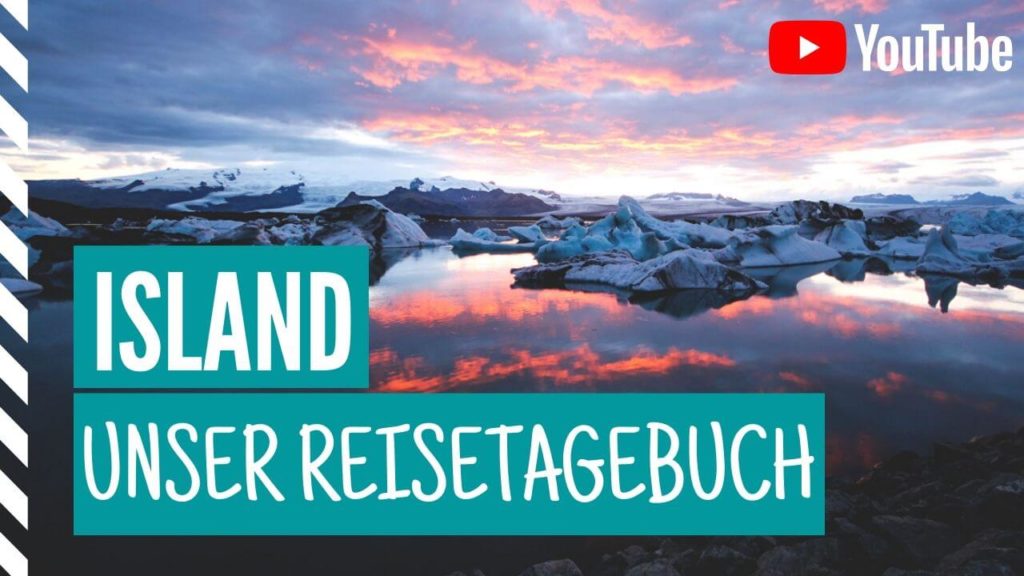The cheapest way to travel in Iceland is certainly camping (tjaldsvæði). Accommodations are usually quite expensive, so many people choose to bring their own (or rented) tent. Some even come to Iceland by ferry with their own car, camper, or caravan. This is also possible with the necessary cash.
We traveled the island with a tent, sleeping mat, and sleeping bag. We explored the south, east, north, and other parts of the island. Camping in Iceland is very easy and highly recommended if you’re up for it. You couldn’t get any closer to nature. We’ll tell you everything about this topic and give you tips on what you should pay attention to when camping in Iceland.
Other important Iceland topics:
- Driving in Iceland
- Camping in Iceland
- Sights of Iceland
- Currency in Iceland
- Best time to travel to Iceland
- Routes for 7 and 14 days
- Costs for our trip
- Our Iceland country page
- The South of Iceland
- The Vatnsnes Peninsula
- The North of Iceland
- The East of Iceland
- The Westman Islands
- The Southeast of Iceland
- Reykjavik Highlights & Tips
- The Golden Circle
- Other important Iceland topics:
- 1. Best time to go camping
- 2. Current camping regulations
- 3. Campsites in Iceland
- 4. Save money with the Camping Card
- 5. Camping equipment
- 6. Rent a caravan/campervan
- 7. Safety tips for camping
- 8. Glamping in Iceland
- 9. Conclusion on camping in Iceland
- Iceland Camping – The podcast article
- Our travel diary on YouTube
1. Best time to go camping
You can travel to Iceland all year round. You can marvel at the winter wonderland or enjoy the vibrant colors in summer, hopefully with good weather. We were on the island from the end of August to mid-September and had great weather with blue skies and sunshine for 10 days. It only rained on 4 days, and it was also gray and extremely windy. The unpredictable weather always presents challenges. We checked the weather several times a day because it was constantly changing. We were never really able to plan ahead. And even we encountered a severe storm on the first day of our trip, which is why we moved into accommodation.
Storms can even lead to road closures. So you should check the weather forecast every day and take it seriously. You can find out everything about road closures and weather-related hazards on the Iceland Rescue Team website. We always checked the weather at www.vedur.is (also via the app of the same name). It’s also important to know that many campsites are only open between April/May and September/October. You can often access the site outside of these months, but you usually won’t have access to showers, toilets, or electricity. However, there are also campsites that are open year-round (see here).
But do you want to camp in Iceland in winter? We probably wouldn’t do it with a tent. It might be quite comfortable with a camper or caravan. The best time to camp in Iceland is between May and September. It rains less then than in other months, almost all campsites are open, and the snow has disappeared. But the weather in Iceland is and remains unpredictable. For example, in July 2018, there was more rain than ever before. So much for the weather and climate charts. More about the best time to travel to Iceland here.
2. Current Camping Regulations
Camping in Iceland is really easy and tourist-friendly. Even wild camping used to be permitted. Unfortunately, this has changed with the high number of visitors. The country has tightened its camping regulations, because unfortunately, not all travelers still adhere to the (actually quite simple) rules. For example, wild camping is completely prohibited in the south. Caravans, cars, vans, and other vehicles are also no longer allowed to park anywhere and spend the night there. They must all be accommodated at a campsite. However, this does not apply to the wilderness and the highlands. Wilderness refers to regions where people do not live permanently and where there are no outstanding structures or infrastructure.
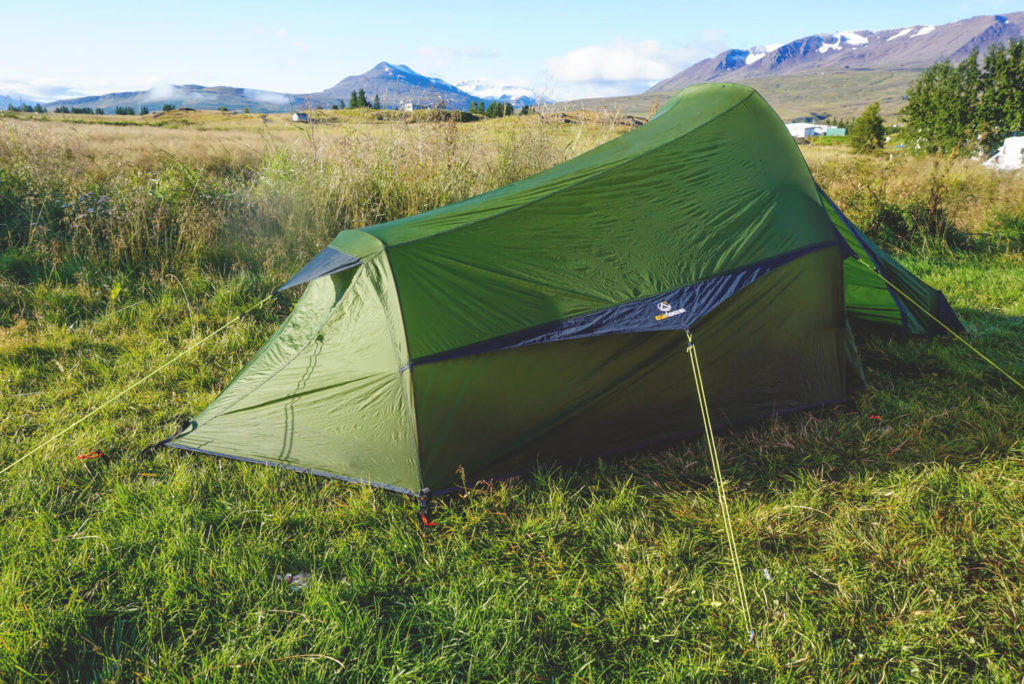
If there is no public campsite nearby or you are not on private property, it will be tolerated for one night. You should avoid entering anything marked by fences or appropriate signs. You can, of course, also obtain explicit permission from the landowner. You also need permission if you plan to stay longer than one night or if you plan to set up more than three tents. You should always set up camp out of sight of roads and residential buildings. Leave your camp as you found it. Take your trash with you, don’t make noise, and respect your environment.
Wild camping with a caravan is not permitted. The only exception to this is on private land, provided you have a permit. Icelanders are very friendly and helpful. They often tolerate wild camping and don’t mind it. Generally, camping is prohibited in one of the three national parks (Vatnajökull National Park, Þingvellir National Park, and Snæfellsjökull National Park). There are exceptions in Vatnajökull National Park and Snæfellsjökull National Park, provided you obtain permission from a ranger in advance. All these rules are subject to change at any time.
3. Campsites in Iceland
We recommend always using a campsite. Not only can you be in good company, but you can also use toilets, showers, a kitchen, electricity, and other amenities. You’ll also be protecting the environment by not just pitching your tent somewhere in the wild. Although Iceland is sparsely populated, you’ll find numerous campsites (around 150) throughout the island. There are always plenty of campsites near tourist hotspots, especially in the south along the Ring Road.
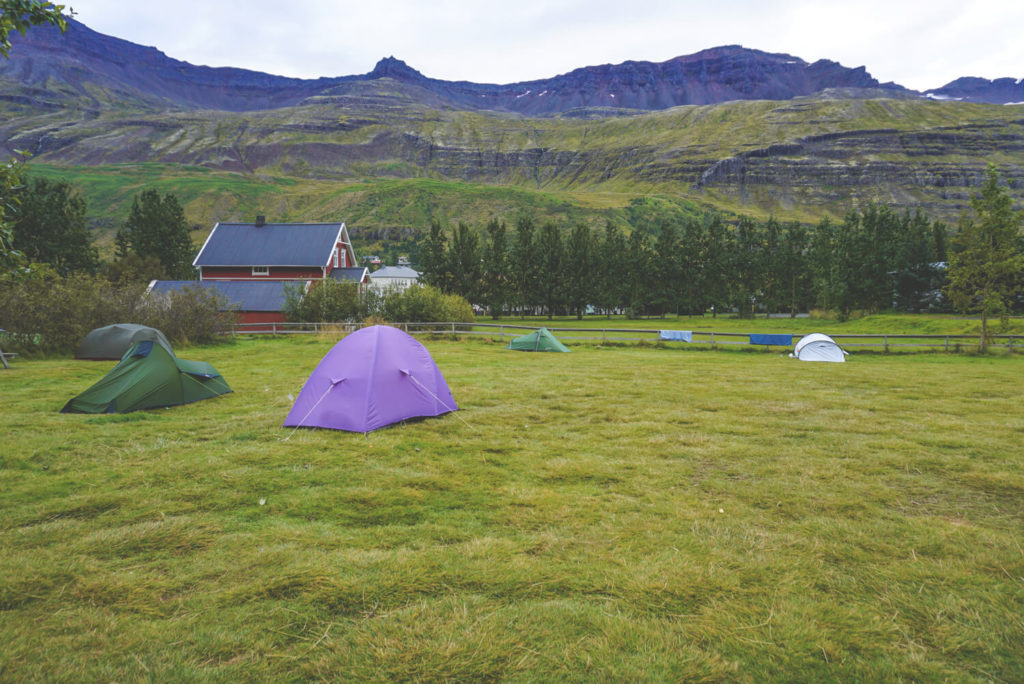
We never had any problems finding a place to stay overnight. However, the campsites vary greatly. Sometimes there are toilets, showers, a kitchen, Wi-Fi, and a laundry room; sometimes there’s just a toilet and a sink for washing up. You should always inquire in advance about which campsite suits your needs. You should also pay attention to the opening hours. Many campsites are only open during the season between mid-May and mid-September. You can find a good overview with detailed descriptions of the sites on the tjalda.is website. You can also find campsites and other accommodations spread across the island on Visit Iceland.
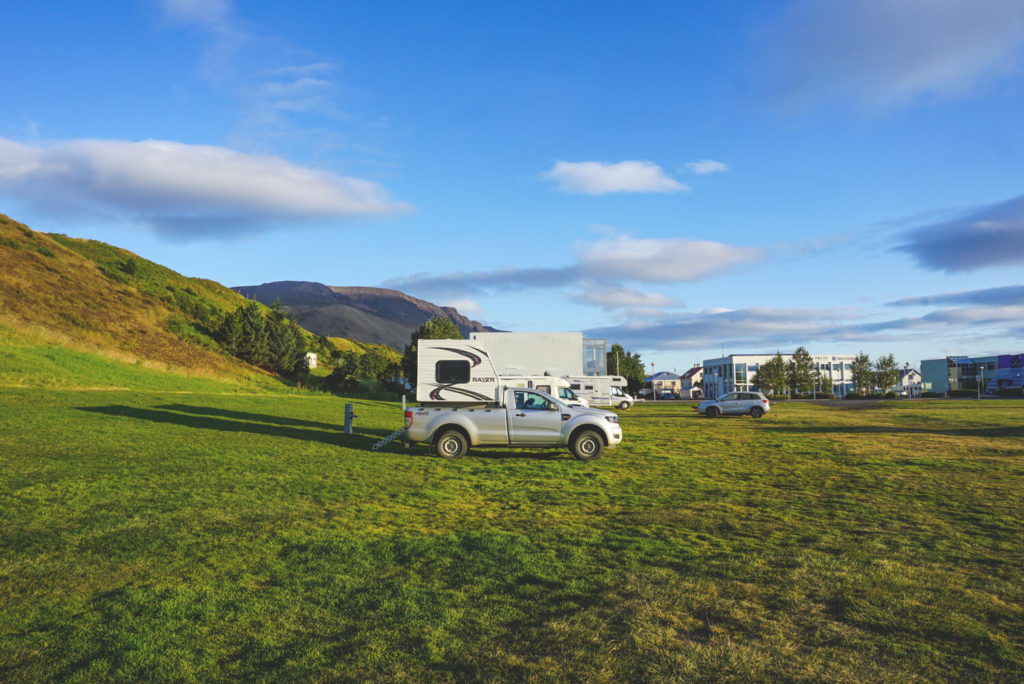
The costs for campsites vary from site to site. Sometimes you pay 1,000 ISK per person per night, sometimes 1,700 ISK. On average, however, it’s around €12–15 per person per night. Electricity, laundry, and showers usually cost extra (between 200 and 500 kroner). General information about campsites: There are often not enough toilets, power outlets, and showers for the large number of visitors. The sites are particularly full in the south. In the west, north, and east, it was much more relaxed. You pay the money on site, either at reception or a caretaker will come around in the evening or morning and collect the money.
Our campsites (12 nights):
- Hvammstangi (1 night)
- Lónsá (1 night)
- Saudákrókur (1 night)
- Fjalladryd (1 night)
- Seydisfjördur (1 night)
- Svínafell (1 night)
- Vík í Mydral (2 nights)
- Hella (3 nights)
- Vestmannaeyjar (1 night)
4. Save money with the Camping Card
We used the Camping Card for our trip to Iceland. This card allows you to stay for 28 nights at one of the 42 campsites. The card is valid for 2 adults and up to 4 children until September 15th. Once you arrive, you only pay the Icelandic tourist tax of 333 ISK (2.61 €) per tent (or caravan). Extras such as showers or laundry are not included in the price. The card is worthwhile from the 8th and at the latest from the 9th night. We stayed 10 nights at one of the designated campsites and ended up saving around 30 €.
At the end of the trip, we paid an average of only 18 € per night for two people. The more nights you stay, the greater the savings. The campsites here, too, are completely different. Some are very well-equipped, others rather plain and simple. One negative thing we noticed: On the way from the East Fjords to the south, there is no campsite included in the Camping Card. Here, you either have to cover a lot of ground in one day or camp at a different site for one night and then pay extra for it (that’s what we did).
*Disclosure: The Camping Card was provided to us free of charge.
5. Camping Equipment
Sometimes you might come across a very basic site with only a few toilets and maybe a small common room. Not everywhere is there hot water or electricity for charging batteries. There isn’t always a kitchen for cooking, Wi-Fi, or washing machines. Check online beforehand to see what to expect. It’s also a good idea to read the reviews of the sites online. This might save you from a camping disaster. Did you know that you can rent all the equipment on-site? Check it out here: Iceland Camping Equipment.
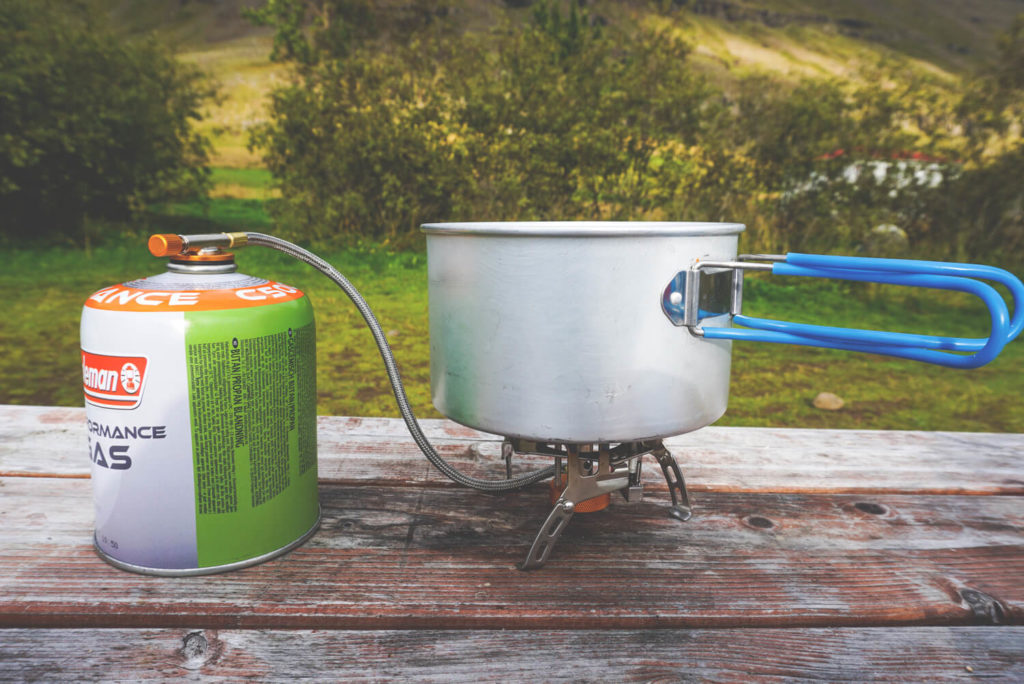
You should definitely bring a power tube* or a car adapter* to charge your phone and camera batteries on the go. This way, you won’t have to rely on electricity for one night. We also bought a few extra batteries for our cameras in advance. This way, we didn’t have to charge them every day. You should also bring a camping stove* (and dishes/cutlery/can opener) if you plan to cook your own meals. We also recommend a windbreak* for this. This way, you can cook in peace, even in windy conditions, without the flame going out.
We also brought a lamp* for our tent so we could read in the evening. You can, of course, also use this for cooking in the evening. As with any other outdoor trip, a pocket knife* is a must in Iceland. If there’s no shower in sight, you can also take a dip in a nearby swimming pool (sundlaug). There you’ll also find a warm shower. Some pools even offer showering for a small fee. You can find a detailed list of our complete camping gear here: Iceland Packing List.
6. Rent a Caravan / Campervan
Traveling with a caravan or campervan is, of course, very convenient. You don’t need a tent, and you might not even need a sleeping mat or sleeping bag. In Iceland, you can really get everything, whether it’s a small van or a very well-equipped caravan. Ultimately, it’s a matter of taste and money. We paid €576 for our rental car (travel period: August/September). In October, you can even get a small car for two weeks for under €250.
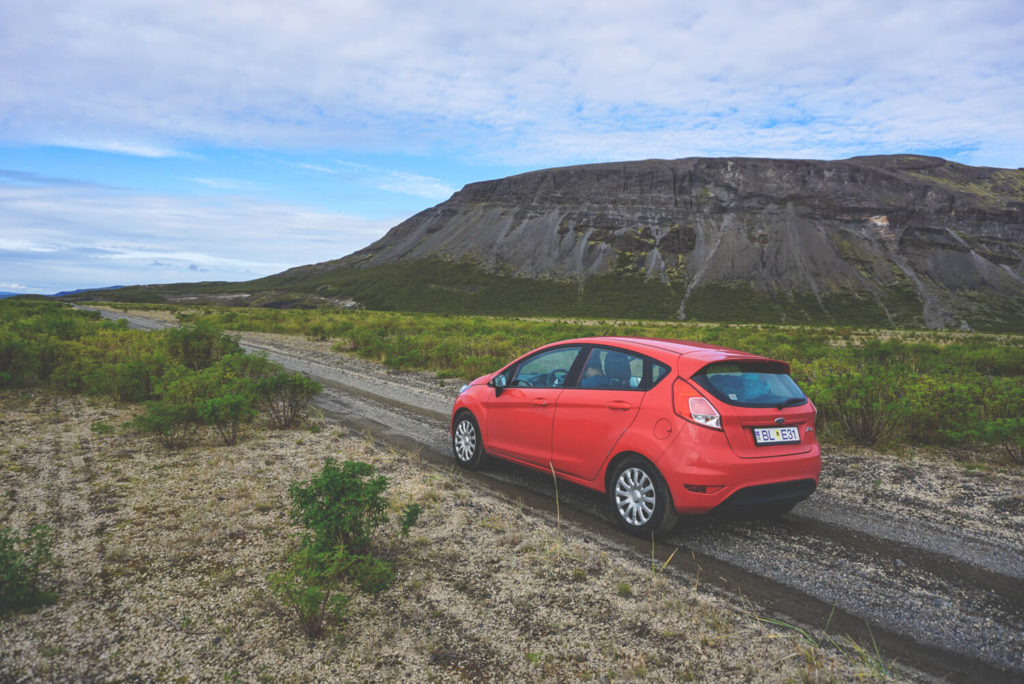
In June, July, and August, you can expect to pay at least €1,500 to €2,000 for a small van with sleeping accommodation for 10 to 14 days. So you can probably imagine what a caravan costs then. Add to that the costs for the campsite and electricity (between ISK 1,000 and 2,000 per person per night, and ISK 500 and 1,000 for electricity). Remember, you are no longer allowed to camp outside of campsites with your car or van.
Here are some providers for Iceland:
- Happy Campers
- Camper Van Iceland
- Kuku Canpers
- Guide to Iceland
- Go Campers
- Camp Easy
7. Safety Tips for Camping
Iceland is one of the safest countries in the world. This has given us enormous peace of mind, as it makes traveling easier. We never had any concerns about leaving our valuables in the car or leaving the tent unattended. But there are certainly a few “black sheep” in Iceland, too. However, caution is always advised. But with common sense, nothing will happen to you in Iceland.
Keep an eye on the weather forecast!
As mentioned at the beginning, you should always keep an eye on the weather forecast. The weather in Iceland can change from one moment to the next. While the sun was shining one moment, it could be raining heavily and becoming stormy the next. You should also always check the Safe Travel website. There you will find information about the weather and road closures. The road.is website also provides valuable information.
If you have a gas canister with you while camping, you should not store it in a warm place. Be especially careful! You should also not cook in your tent and especially not play with fire there. Tents are still made of highly flammable materials. If you pitch your tent at a campsite, always position it against the wind. With a car, it would be the windshield that catches and directs the wind. We always tried to have a hedge or bushes on one side of the tent. We also parked our car to one side of the tent for even more protection. We also peged and secured our tent with additional aluminum pegs.

Camping in Iceland – What to do in severe weather?
If the weather gets really bad, you can also look for sleeping bag accommodations. We’ve occasionally discovered these at campsites. They’re also said to be available in hostels, guesthouses, and hotels. These are usually shared rooms, but some are also private rooms equipped with simple beds. Armed with your sleeping bag, you can then make yourself comfortable there. Every now and then, we looked at the prices and found €35-40 quite expensive. But it would certainly be a stopgap solution, unless you’re looking for a €100 accommodation.
8. Glamping in Iceland
We felt like having a bed for a while. So we took the ferry to the Westman Islands and treated ourselves to a cute cabin there. It was practically glamping instead of camping. We found the cool cabins in Heimaey on Booking.com*. The cabins have two comfortable beds, a refrigerator, two chairs, a table, storage space, a mirror, and heaters. The restrooms and kitchen are located in the main building. We paid €79 per night. The attached campsite is also really great and leaves nothing to be desired. Bed linen, pillows, and blankets are not included in the price (€13 per person extra). But we just slept in our sleeping bags, which worked wonderfully.
The kitchen is well-equipped, so you don’t even need to bring camping dishes and a stove. You’ll find everything you need on site in the kitchen. Nearby are a Bonus and a Kronan supermarket, a great outdoor pool, a few cute cafes, and beautiful nature for hiking and relaxing. Our trip to the island was an absolute highlight of our tour of Iceland. Check out Airbnb*. There you’ll find great cabins for your Iceland tour. If you don’t have an Airbnb account yet, you can sign up using our invitation link*. This way you’ll receive a great discount on your first booking.
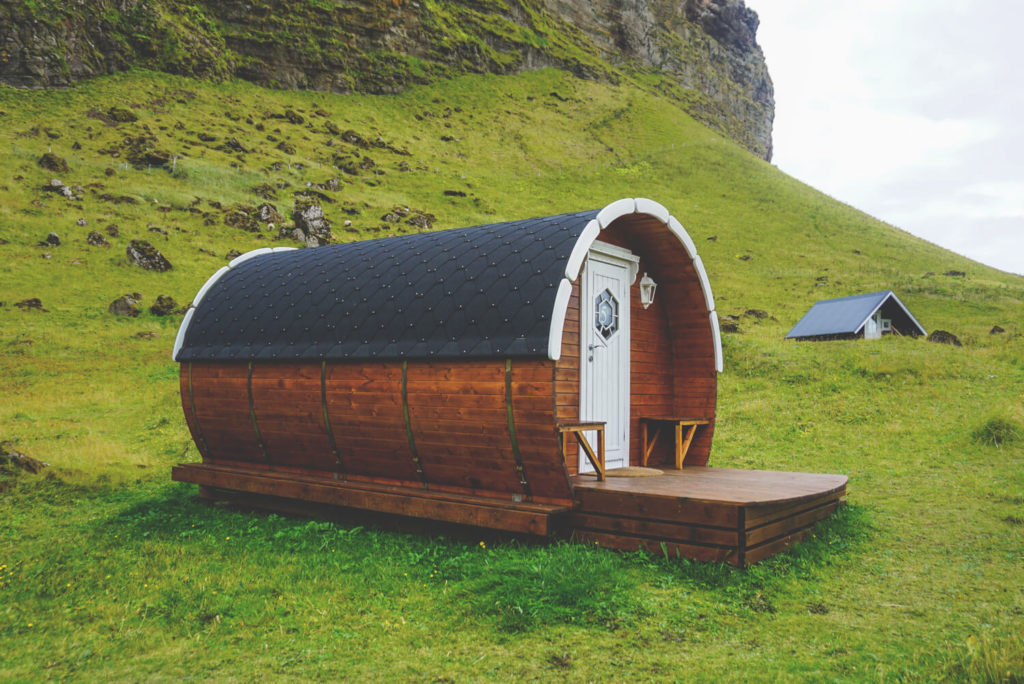
9. Conclusion on Camping in Iceland
We were very lucky with the weather. Out of 14 days, we had really great weather with blue skies and sunshine for 10. Camping is obviously less fun in bad weather, but everything went smoothly. Our equipment lived up to its promise. So, the foundation for a great trip had already been laid. In terms of costs, camping was definitely worth it. With accommodations, we would have paid at least €1,400 for the two weeks and wouldn’t have been as flexible as with our tent. This allowed us to spontaneously change plans and chase the sun.
The campsites were all very good to solid; we didn’t have a particularly bad experience. However, we always did our research beforehand and read reviews. The Camping Card could offer more sites, so you’re not too tied down. But here, too, everything worked out wonderfully. However, popular sites get very busy during peak season, which fortunately we didn’t experience (September). Electricity, cooking, and showering also worked out really well. Thanks to the many spare batteries and our car adapter, we didn’t need to plug in every day.
We would probably do it again the way we did for the two weeks in Iceland. We had a lot of fun camping in Iceland. It was a completely new experience for us, one we wouldn’t want to miss. Iceland is a fantastic country that’s really easy to travel around. Fortunately, many concerns and fears were unfounded (rental car, weather, roads, equipment). We were able to experience an absolute dream trip to Iceland without any problems.
Iceland Camping – The Podcast
Click the button below to load the content from www.podbean.com.
Load Content
Our Travel Diary on YouTube
